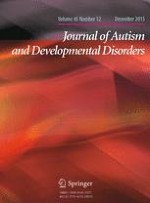17-07-2015 | Brief Report
Brief Report: A Pilot Study of Parent–Child Biobehavioral Synchrony in Autism Spectrum Disorder
Gepubliceerd in: Journal of Autism and Developmental Disorders | Uitgave 12/2015
Log in om toegang te krijgenAbstract
The theory of biobehavioral synchrony proposes that the predictive power of parent–child attunement likely lies in the manner with which behaviors are aligned with relevant biological processes. Symptoms of autism spectrum disorder (ASD) may challenge the formation of behavioral and physiological synchrony, but maintenance of such parent–child attunement could prove beneficial. The present study is the first to examine parent–child physiological synchrony in ASD. Parent and child electrodermal activity (EDA) was measured continuously during naturalistic free play. Parent–child EDA synchrony (positive covariation) was positively correlated with observed parent–child emotional attunement. Hierarchical linear modeling revealed that child ASD symptoms moderated the association between parent EDA and child EDA, such that EDA synchrony was stronger for children with lower ASD symptom levels.
